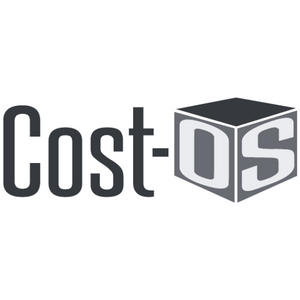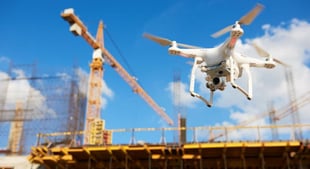The Rise of Modular Construction: Preconstruction’s Role in Prefabrication

What is modular construction? Modular construction is a method where buildings or structures are fabricated off-site in sections (known as modules) before being transported and assembled at the final location. Modular and off-site construction has surged in popularity, revolutionizing the construction industry and offering a range of benefits. According to Fortune Business Insights, the global modular construction market size was $89.44 billion in 2024, projected to be $151.53 billion in 2032. This shift towards modular construction reshapes how projects are planned and executed, with preconstruction processes evolving to accommodate these innovative building techniques.
Let’s explore what modular construction entails, the role of preconstruction in the rise of modular construction, and how trends like prefabricated buildings are gaining traction in the construction industry.
What is Modular Construction?
Modular construction is a type of construction where buildings are produced in segments (or modules) in a controlled factory environment before being assembled on-site. These modules are built to meet the same building codes and standards as traditional buildings, ensuring they are safe and durable. The process involves designing, building, and assembling structures in sections at a manufacturing facility, where they are then transported to the construction site and put together.
This contrasts with traditional construction, which is carried out entirely on-site. In traditional construction, each phase—such as foundation laying, framing, and finishing—occurs in sequence and typically involves a lengthy time frame, exposing the project to delays due to weather, labor availability, and other challenges. In modular construction, much of this is streamlined through the factory setting, where the conditions are carefully managed.
Modular buildings can be anything from single-family homes to large commercial complexes, schools, and even blocks of apartments. Modular construction offers a wide range of possibilities for small- and large-scale projects.
The Role of Preconstruction in Modular Construction
As modular construction continues to gain momentum, the role of preconstruction, the phase in which planning, design, and budgeting are laid out, has become more important than ever.
In traditional construction, general contractors and developers rely on on-site conditions and timelines to dictate the planning process. However, with modular construction, much of the building process happens off-site, and this requires different considerations for preconstruction teams.
The construction process for modular construction involves early coordination with factory production timelines to ensure that every aspect of the modules, from structural elements to building materials, aligns with the final project vision. Preconstruction teams must work closely with manufacturers, architects, and engineers to ensure that designs are modular-friendly, keeping the project on track to meet the required real estate specifications and budget. This early collaboration allows teams to anticipate any challenges that could arise during the transport and assembly of the modular units.
Preconstruction professionals also ensure that building sites are adequately prepared for the modular assembly. The foundation must be in place ahead of time, and site access must be suitable for transporting and assembling large units. Preconstruction teams also help ensure the design adheres to building codes and regulations. Modular buildings must comply with local standards just like traditionally constructed buildings.
The Demand for Modular Construction
As the construction industry evolves, so does the demand for faster, more efficient building methods. The prefabricated buildings and modular construction trend offers solutions to many industry challenges. One of the drivers of this demand is cost savings. By building modules off-site, construction can be completed more quickly, reducing labor costs and project timelines. Additionally, the controlled factory environment reduces waste and improves quality control, leading to further cost efficiencies. For instance, a 2023 study titled Modular Multi-family Construction: A Field Study of Energy Code Compliance and Performance through Offsite Prefabrication shows that modular construction projects have a 5% perfect decrease in construction costs.
Using modular units also significantly reduces the impact of construction site delays. Weather, labor shortages, or supply chain issues can delay traditional construction projects. Since most of the work is done off-site in a controlled environment, modular construction can occur with fewer interruptions, making it an ideal option for projects with tight deadlines.
What’s more, modular construction offers flexibility that traditional construction can’t match. For instance, it’s easier to scale projects up or down by adjusting the required modules, making it a versatile option for small-scale residential and large commercial developments.
Benefits of Modular Construction
There are numerous benefits of modular construction, especially when it comes to large-scale projects. The most obvious is speed. Modular construction can shorten project timelines by as much as 50%, as much of the work is done simultaneously with site preparation. That means the timeline is less dependent on the weather or other on-site conditions, making it an attractive option for time-sensitive developments.
Another advantage is cost savings. Developers can save on labor costs, materials, and site time with modular buildings. Since modules are built in a factory setting, the level of precision in manufacturing is higher, leading to fewer errors and a reduction in the amount of building materials needed. And since the construction is completed faster, financing costs are lower, making modular construction a good option for real estate developers.
Sustainability is another benefit of modular construction. Due to the controlled environment, there is less material waste, and the building's energy efficiency can be optimized from the start. This approach aligns well with the growing trend of green building practices.
The Challenges of Modular Construction
Despite its many advantages, modular construction does face challenges. One of the primary hurdles is overcoming the perception that modular buildings are of lower quality than those built using traditional methods. Luckily, this misconception is slowly being debunked as more high-quality, aesthetically pleasing modular buildings emerge.
Another challenge is ensuring modular units are successfully integrated into traditional construction workflows. While the factory environment allows for precise construction, coordinating the logistics of transporting and assembling modules on-site can be complex. To address this, preconstruction professionals and general contractors must work closely with manufacturers and engineers to ensure smooth assembly once the modules arrive at the site.
Building codes can also pose a challenge. Building codes vary by region, and modular buildings must comply with the local regulations where they are being assembled. As modular construction continues to gain ground, local codes must evolve to address the unique needs of modular construction.
The Future of Modular Construction
The future of modular construction seems incredibly promising. The demand for affordable, sustainable, and quick construction solutions will continue to drive the adoption of modular buildings. As the industry continues to innovate and improve, we may see permanent modular construction (PMC) become the standard for specific projects, including housing, schools, and commercial developments.
Software tools like DESTINI Estimator are invaluable for facilitating the efficient planning and budgeting of modular construction projects. The leading preconstruction software allows teams to accurately estimate the costs, timelines, and resource requirements for modular and off-site projects. By streamlining the estimating process, this software empowers preconstruction professionals to make data-driven decisions and ensures that modular projects stay on track and within budget.
New Tools for a Brighter Future
The rise of modular construction is reshaping the construction industry, offering benefits such as faster timelines, lower costs, and greater sustainability. As demand for modular buildings grows, preconstruction processes are evolving to meet these new needs. With innovations in design and technology, modular construction offers a bright future for the construction process in the United States and beyond.
By leveraging tools like DESTINI Estimator, preconstruction teams can continue to refine and improve their approach to modular construction, helping to accelerate the growth of this type of construction. As modular construction continues to evolve, it will become an even more integral part of the future of real estate development.

-1.png?width=112&height=112&name=image%20(4)-1.png)














